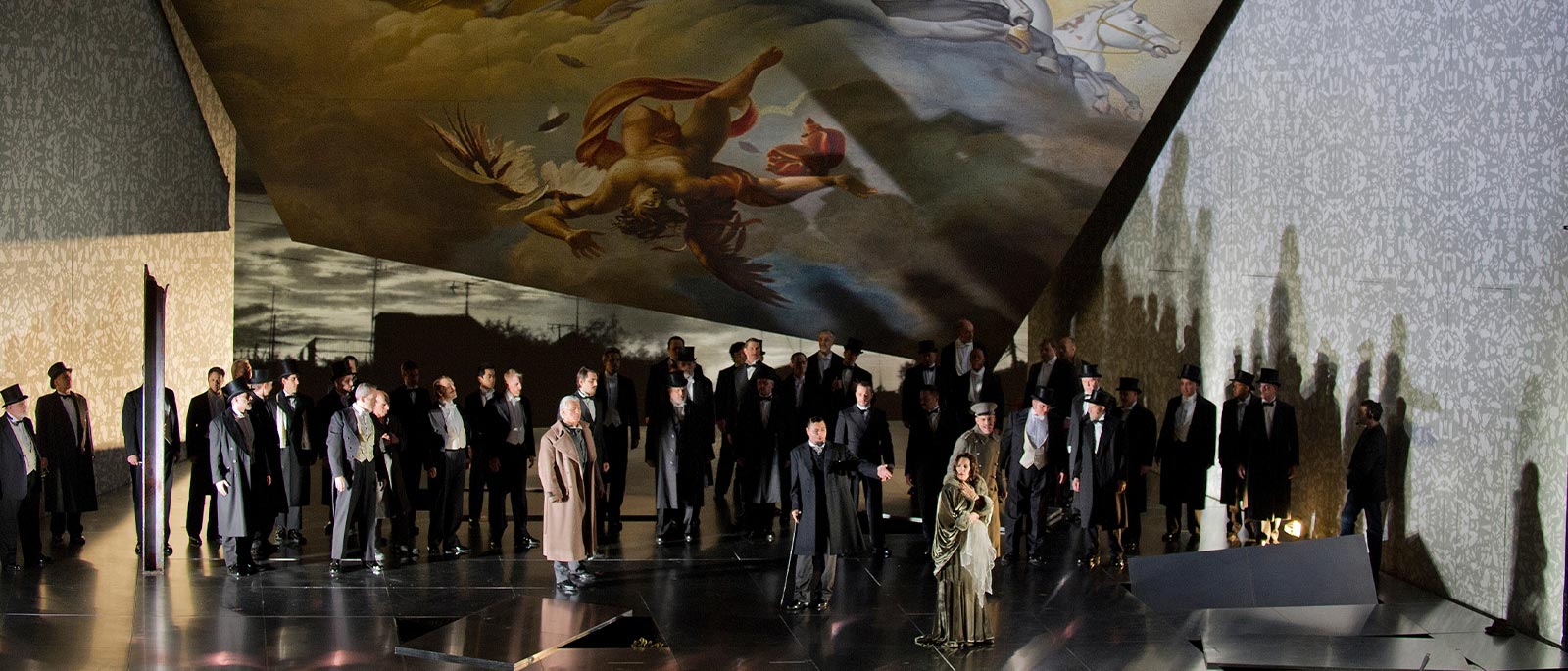
Un Ballo in Maschera
What do you do when you discover that your wife is in love with your best friend—who just happens to be the king? Love triangles like this have been a staple of opera since the very beginning; throw in a murderous conspiracy and a mysterious fortune teller, and you have the ingredients for Un Ballo in Maschera. Based loosely on historical events, the opera tells the story of Gustav III, King of Sweden, his assassination by an aggrieved nobleman called Anckarström, and the professional medium Madame Ulrica Arvidsson, who allegedly predicted the tragic course of events. In Verdi’s hands, this tangled tale of love and betrayal, supernatural forces, and political intrigue becomes one of his typically moving and effective pieces of theater.
Un Ballo in Maschera has a tortured composition history. Verdi originally wanted to set Shakespeare’s King Lear, one of his all-time favorite plays; he settled on Gustave III, the source material for Ballo, only after his Shakespearean plans had fallen through. The new subject was then the cause of an epic battle with the theatrical censors, which ended with Verdi refusing to stage the opera in Naples, where it had been commissioned, and premiering it in Rome instead. Along the way, the original Swedish setting got swapped, however improbably, for colonial Boston, Massachusetts. And yet, despite its chaotic creation, Ballo is a triumph. One of Verdi’s most diverse scores, its catchy tunes and expertly judged dramatic shifts keep spectators hooked from the beginning. The opera also has a special place in the history of the Met: In 1955, the famous contralto Marian Anderson became the first Black singer to appear in a leading role on the Met stage, singing the role of Madame Arvidsson. Thanks to Anderson breaking the Met’s “color line,” a long line of world-leading Black singers have made the company their home ever since.
This guide is intended to help your students understand Un Ballo in Maschera as the meeting point of different operatic traditions and as a case study in the unexpected difficulties composers of Italian opera could face when bringing sensitive topics to the stage. They will also help students appreciate the creative choices made by David Alden in his dreamlike production of Verdi’s opera, which restores the original Swedish setting while updating the action with a threatening, glamorous evocation of mid-20th-century film noir. The information on the following pages is designed to provide context, deepen background knowledge, and enrich the overall experience of attending a final dress rehearsal at the Metropolitan Opera.